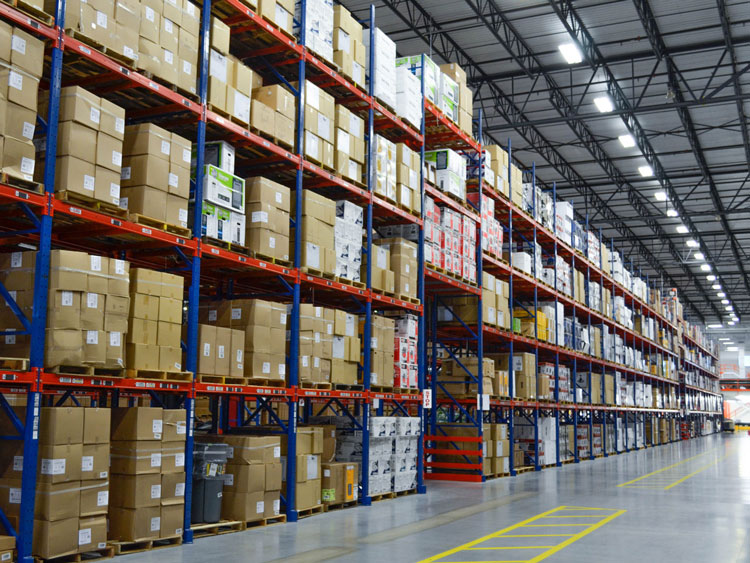Effect on Storage Capacity
Vertical Storage Increase:
As the height of the pallet rack increases, the potential for vertical storage also rises. For example, if a standard pallet is 6 inches in height and a pallet rack is 12 feet (144 inches) tall, the theoretical number of pallets that can be stored vertically is 144/6 = 24 pallets. If the rack height is increased to 20 feet (240 inches), the number of pallets that can be stored vertically becomes 240/6 = 40 pallets. This shows a significant increase in storage capacity as the height is extended.
Utilization of Warehouse Volume:
In a warehouse with a high ceiling, taller pallet racks make better use of the available cubic space. Instead of occupying more floor area, which might be limited or costly, the racks can store more goods in the vertical direction. This is especially beneficial for storing items with a high storage demand and limited horizontal space. For instance, in a small – footprint urban warehouse, maximizing the height of pallet racks can help accommodate a large inventory of products.
Space – Saving for Aisles:
Taller racks can sometimes lead to more efficient aisle use. If the racks are taller, the number of aisles might not need to increase proportionally to the increase in storage volume. For example, if you double the height of the racks, you may not need to double the number of aisles, which means more of the warehouse floor area can be dedicated to actual storage rather than access aisles.
Effect on Safety
Stability Concerns:
Taller pallet racks are more prone to instability. The higher the rack, the greater the moment arm created by the stored pallets’ weight. For example, a pallet located at the top of a 30 – foot – tall rack exerts a much greater lateral force on the rack’s uprights than a pallet at the bottom. To counteract this, the rack needs to have more robust uprights and bracing systems. The base of the rack also requires a more secure anchoring to the floor to prevent tipping.
Forklift Operation Risks:
Operating forklifts around tall pallet racks poses safety risks. The forklift operator needs to have a clear view and precise control when lifting pallets to the upper levels of the rack. There is a higher chance of accidents such as pallets falling during loading or unloading if the operator misjudges the height or position. Additionally, the forklift itself needs to have sufficient lift height capacity and stability to safely access the higher pallet locations.
Load – Bearing Capacity and Structural Integrity:
The load – bearing capacity requirements for taller racks are more stringent. The weight of the pallets at the upper levels can cause the rack’s components, such as the beams and uprights, to experience greater stress. The materials and design of the rack must be able to withstand these increased forces over time. For example, the beams may need to be thicker or of a higher – grade material to support the weight of multiple pallets stacked vertically without sagging or breaking.
Post time: Apr-29-2025

